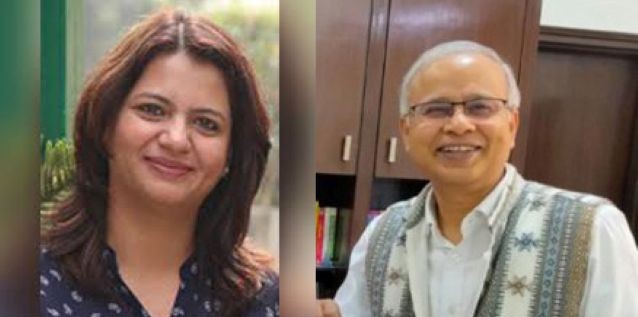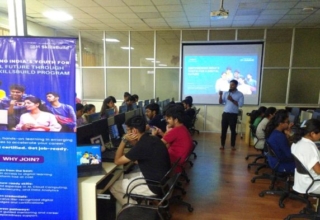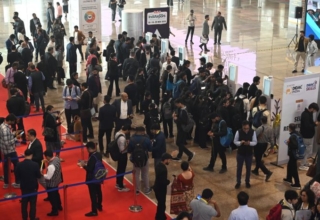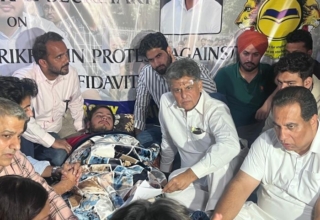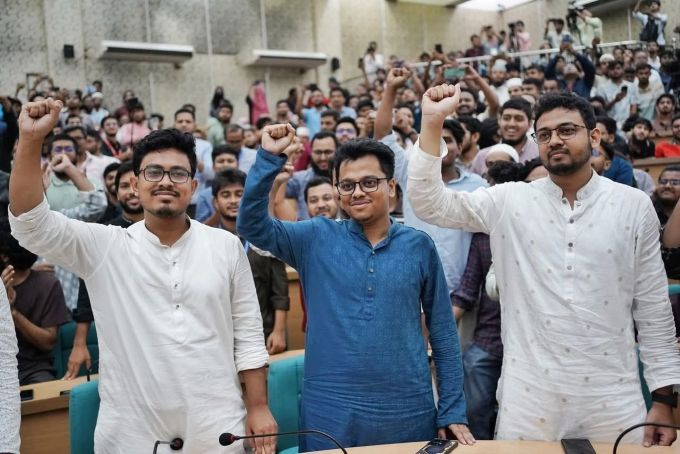
After Islami Chhatra Shibir’s (ICS) landslide victories in both DUCSU and JUCSU this September 2025, observers expect Bangladesh’s student politics to take a decisive turn. ICS, the student wing of Jamaat-e-Islami, is likely to push harder for cultural Islamization on campuses, with hijab campaigns emerging as an early front. Winning Dhaka University Central Students’ Union was not merely about securing positions — it was a symbolic statement of ideological direction, influence, and legitimacy. This is particularly significant because Dhaka University has historically been a secular-nationalist stronghold, where hijab use was less politicized. A shift at DU can ripple outward, setting the tone for other universities.
In the September 2025 DUCSU elections, ICS captured 23 of 28 seats, including all major posts. Jatiyatabadi Chhatra Dal (JCD), the student wing of the BNP, performed poorly, while the Awami League’s student wing, the Chhatra League, was barred from participation. This reshaped a campus political tradition that, since independence, has largely oscillated between the Awami League and BNP, with student unions and protest movements often spearheading broader national struggles — from the Language Movement of 1952 to the uprisings of the 1960s.
This time, however, Jamaat’s cultural project of Islamization through education and youth seems within reach. Long marginalized, ICS leveraged its cadre discipline, religious networks, and mobilization capacity to consolidate influence. For Jamaat, campuses are not just spaces of learning but “ideological battlefields.” Within this framework, female modesty (hijab or niqab) is elevated as both a religious obligation and a visible marker of Islamist identity. ICS cadres present hijab as a form of “moral discipline” and a rejection of “Western” or “secular” lifestyles. Female ICS activists in hijab are often showcased as disciplined, moral exemplars, while calls for segregated seating in libraries, classrooms, or cultural events are justified under the banner of “Islamic modesty.”
This project, however, has a double edge. While some female students adopt hijab as a personal expression of faith or identity, critics argue that ICS politicizes the choice — transforming hijab into a factional badge rather than a private devotion. Reports have surfaced of unveiled students being verbally harassed as “un-Islamic,” or discouraged from participating in cultural activities such as singing, dancing, or drama unless they complied with hijab norms. Even modest hijab-enforcement efforts at Dhaka University carry national resonance, given the institution’s historic role in Bangladesh’s political and cultural life.
The influence is not limited to public universities. While Jamaat’s student wings are weaker in private universities due to tighter administrative control, Islamist student circles inspired by Jamaat ideology still campaign for hijab.
These student union elections are widely regarded as a dress rehearsal for the 2026 parliamentary elections, in which questions of Islamic identity, secularism, corruption, and nationalism are likely to play central roles. ICS’s success signals that Islamist-oriented actors are increasingly able to mobilize students not only through religious appeals but also by tapping into grievances about corruption, alienation, and lack of accountability.
In February 2025, activists from Students Against Discrimination (SAD) and the Jatiya Nagorik Committee (National Citizens Committee) formally launched the National Citizen Party (NCP), aiming to institutionalize the spirit of the 2024 protest uprisings. Their emergence highlights the role of student politics in Bangladesh future course. The country may still be divided into two distinct currents: one Islamist, rooted in Jamaat’s project of cultural Islamization, and another civic-secular, seeking systemic reform and accountable governance, but radical transformation of Bangladesh is taking place right now.
The geopolitical context adds another layer. The interim regime’s growing proximity to China, a country that has historically tolerated Islamization abroad while maintaining ties with Islamist states like Pakistan and Iran, may embolden Jamaat’s cultural agenda. Meanwhile, Turkey’s sustained bid to position itself as a global Muslim leader, through government, media and institutional outreach, could resonate more strongly in Bangladesh’s shifting political climate.
At this crossroads, the rise of ICS on Bangladesh’s flagship campuses suggests that the battle for the nation’s political future is already unfolding in classrooms, dormitories, and student unions — with hijab and cultural Islamization at its frontline.


